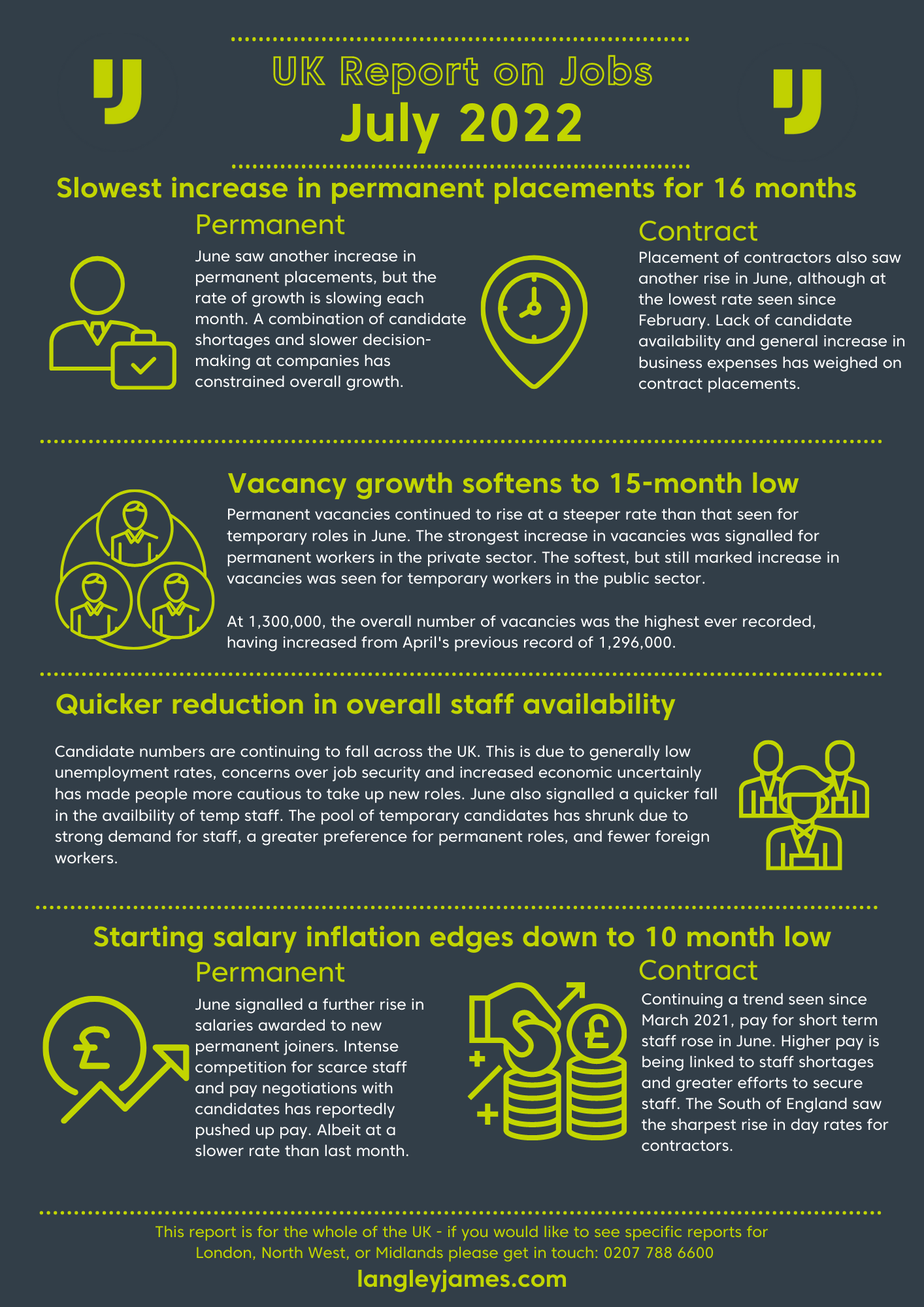
Jul 20, 2022 | Hiring Resources, IT, Tips
When it comes to attracting candidates, the benefits of offering hybrid working are something you should still consider. As yourself, is it necessary to have your team on site for 5 days? We appreciate that some roles in IT are hard to perform remotely. However, it still seems that most candidates are looking for flexibility and some form of hybrid working.
We’ve all been experienced the benefits of working from home. Saving money and time on commuting, having a better work / life balance. There are many great things about being able to work flexibly. But what about the benefits to you, the employer? What have you got to gain from offering hybrid working? Our expert recruiters share their insight.
Larger pool of candidates
We are living in a time where there is a real shortage of skilled candidates. With vacancies over 1m in the UK and unemployment figures low, it’s getting harder to find the best IT talent. However, if you can offer remote working, your candidate pool suddenly becomes the whole of the UK, or even the World! Think of the diversity this could bring to your team. And the greater availability of exceptional candidates for your IT vacancy.
Improved loyalty is one of the benefits of offering hybrid working
According to various reports, we are in the middle of The Great Resignation. Around the world, workers are quitting their jobs in record numbers – and bosses are still scrambling to figure out how to keep them. However, offering hybrid working can help combat this. Lots of people were working from home during lockdown and let’s be honest, we all got rather used to it. Companies adapted and in most cases, business continued as normal.

But now that we are back in the office, the promise of flexible working is slowly disappearing. But candidates are looking for flexibility. Therefore, if you are genuinely able to offer hybrid, flexible or remote working, you should have a larger pool of candidates to choose from. Plus, if you continue with flexible working, employees are likely to stay with you for longer. Why would they move for another job if it meant going back to an offer 5 days a week?
It focuses on mental wellbeing
Mental wellbeing has been big news recently. There’s a renewed focus on the mental health of our teams. And companies who have a wellbeing policy are more likely to attract more candidates. By offering flexibility in working patterns, or work locations, you will be seen as a company who looks after their employees. It also shows that you have trust in your teams, and this can go a long way.
Are you recruiting?
If you are currently recruiting in IT, you’ve no doubt noticed the huge reduction in applications. That’s where we can come in. We’ve been recruiting IT candidates for over 20 years and have a large database of highly skilled IT candidates. Even in the skills shortage, we are still able to secure exceptional levels of IT talent for our clients. We’d love the opportunity to do the same for you. Get in touch with our team today and see how we can help you to recruit someone worth recruiting.

Jul 9, 2022 | Hiring Resources, IT
IT salaries seem like they are on an ever-increasing trajectory. With the demand for staff higher than ever before, and the candidate pool shrinking by the day, it’s no surprise. But what does this actually mean for salaries?
We regularly review the average salaries for the most popular jobs in IT. And we always give an indication if it’s up or down from the previous month. But it’s when you look over a longer period that you really get to see the bigger picture. Some will have you believe that salaries have increased dramatically across the board. This is not the case. Yes, it’s true that some salaries have seen as much as 96% increases. However, there are some areas of IT where salaries have remained broadly the same.
So, we’ve taken a look through the archives to give you a bigger picture view of IT salaries over the last 2 years.
Senior IT leadership roles that saw the biggest increase in IT salaries
There’s no doubt that it’s at the top end of the scale where we’ve seen tha largest jumps in average pay. In September 2020, the average salary for a CTO was £100k. And in our most recent salary survey (July 22), that’s increased to £144k. An easy % increase to work out there! And it’s a similar story for an IT Director. £112k in September 2020 to £150k in July 2022. A 34% increase. And a Head of IT too. £77k in 2020, £90k today. So, if you are looking to hire into your senior IT leadership team, it’s safe to say you’ll have to offer a lot more to attract the best than you did 2 years ago.
Trends that have helped increase average salaries in IT
The world of business has experienced many changes over the last 2 years. The pandemic meant that some business really had to fast track future plans. And this is reflected in the average IT salaries for those jobs most in demand to operate in this new normal. The step change growth in e-commerce when we were all confined to our homes has had a dramatic impact on salaries in this specialism. In September 2020, the average salary for an e-commerce manager was £65k. You’d now have to pay around £84k to secure the same talent.
But it’s not just e-commerce. Business are relying more heavily on data than ever before. Data driven insights have become an essential part of business success. And this is where we reveal the IT role that has seen the largest increase in average salary. A database manager would earn an average salary of just £50k in September 2020. This is now a much larger sum of £96k. That’s a 92% increase!

IT salaries that have remained more static
Whilst all areas of IT have experienced some increase in average salaries. Some have seen little change. However, before we share this information with you, it’s important to consider that these are the average salaries on offer. An overview of the jobs market and demand for candidates. The skills shortage does mean that starting salaries are often higher than that advertised. Take a look at our most recent report on jobs to see the trends.
When researching the change in salaries, we noticed that it’s the less senior roles that haven’t seen too much change. For example, a 1st Line Support role was £28k in 2020. And that figure remains the same today. And it’s a similar story with 2nd line. £35k in 2020 and £26k today. It’s 3rd line that has seen the largest increase in the support specialism. An increase of 9% from £36k in 2020 to £51k in 2022.
Want to know more?
We’ve been recruiting IT candidates since 1999. And we’ve seen a lot of agencies come and go during this time. It’s not enough for an IT recruitment agency to simply advertise your job and share the best applications with you. You could do that yourself! Admittedly, there would be a cost to advertise the roles that could end up costing a lot more than a recruitment fee, but the choice is still there.
At Langley James, we are experts at what we do. Our pure passion for all things IT is seen throughout our exceptional service levels. We work on all our clients’ vacancies as if they were our own. And this is where our market research comes in. We know the market. We know the trends, the average salaries and more. And we make sure that we share this with all our clients to enable them to recruit someone worth recruiting.
Get in touch with our team today to see how we can help with your IT vacancies.







Recent Comments